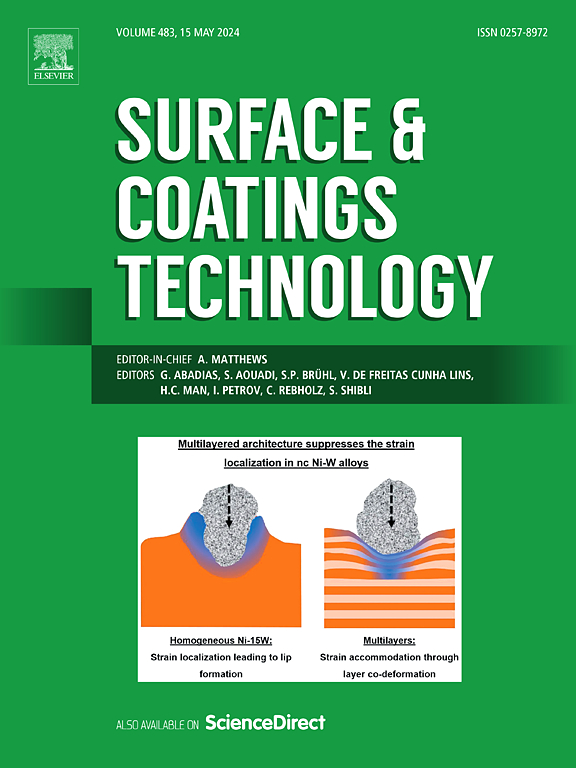Sensitivity analysis of various physics processes in industrial HiPIMS: A global plasma modeling perspective
IF 5.3
2区 材料科学
Q1 MATERIALS SCIENCE, COATINGS & FILMS
引用次数: 0
Abstract
A global plasma model has been developed for a novel HiPIMS deposition process, which integrates both HiPIMS and RF power applied to the target – so-called FastPIMS. The process is utilized for reactive deposition of silicon oxide. Applying HiPIMS and RF power simultaneously helps mitigate the respective limitations of both standalone processes, such as low deposition rate, disappearing anode or arcing. The model is built upon existing concepts in literature, incorporating modifications tailored to the industrial magnetron of FastPIMS. A comprehensive sensitivity analysis focused on HiPIMS-specific physical phenomena is presented, highlighting the importance of including such physics into the models where applicable. The global model's predictions are validated against experimental data, showing convincing agreement and confirming the predictive capabilities of the developed simulation.
工业 HiPIMS 中各种物理过程的敏感性分析:全球等离子体建模视角
本文章由计算机程序翻译,如有差异,请以英文原文为准。
求助全文
约1分钟内获得全文
求助全文
来源期刊

Surface & Coatings Technology
工程技术-材料科学:膜
CiteScore
10.00
自引率
11.10%
发文量
921
审稿时长
19 days
期刊介绍:
Surface and Coatings Technology is an international archival journal publishing scientific papers on significant developments in surface and interface engineering to modify and improve the surface properties of materials for protection in demanding contact conditions or aggressive environments, or for enhanced functional performance. Contributions range from original scientific articles concerned with fundamental and applied aspects of research or direct applications of metallic, inorganic, organic and composite coatings, to invited reviews of current technology in specific areas. Papers submitted to this journal are expected to be in line with the following aspects in processes, and properties/performance:
A. Processes: Physical and chemical vapour deposition techniques, thermal and plasma spraying, surface modification by directed energy techniques such as ion, electron and laser beams, thermo-chemical treatment, wet chemical and electrochemical processes such as plating, sol-gel coating, anodization, plasma electrolytic oxidation, etc., but excluding painting.
B. Properties/performance: friction performance, wear resistance (e.g., abrasion, erosion, fretting, etc), corrosion and oxidation resistance, thermal protection, diffusion resistance, hydrophilicity/hydrophobicity, and properties relevant to smart materials behaviour and enhanced multifunctional performance for environmental, energy and medical applications, but excluding device aspects.
 求助内容:
求助内容: 应助结果提醒方式:
应助结果提醒方式:


